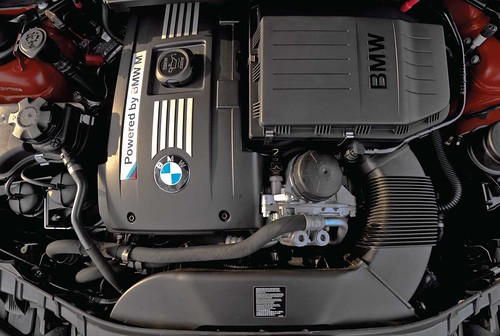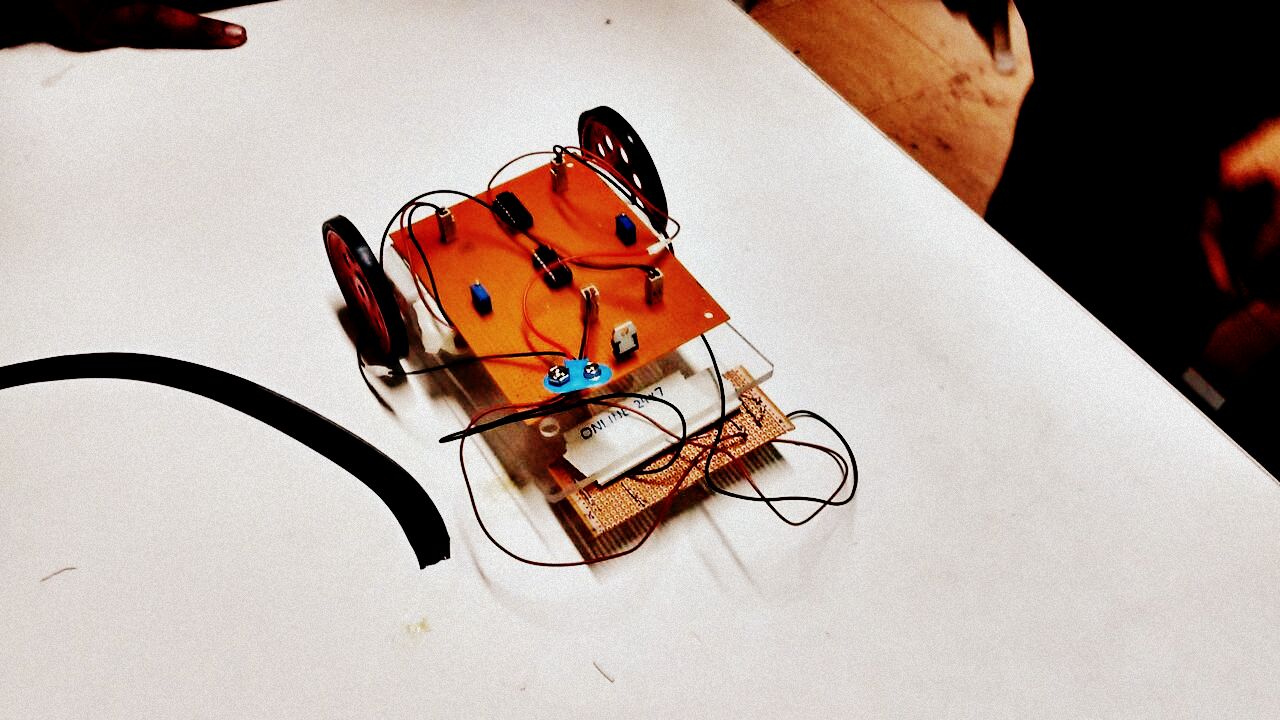Data Analysis – How to use
-
Today, I came across a very interesting article and I am very excited to
share it with all of you. Please read the article below and comment your
thoughts....
Showing posts with label How Heat Engine Works. Show all posts
Internal Combustion Engine
Actually the basic concept behind an Internal Combustion Engine to be called as an Internal Combustion Engine is that the fuel which is available to it is burned inside the core of the engine or in other words the combustion process is carried out internally inside the box of the engine...
The basic principle behind any Internal Combustion Engine-
If you put a tiny amount of high-energy fuel (like gasoline) in a small, enclosed space and ignite it, an incredible amount of energy is released in the form of expanding gas. This large amount of energy can be used to propel a potato to a height of 500 feet. You can also use it for more interesting purposes. Then just think about it, if you can harness this incredible amount of energy in a useful way & could be able to create a cycle that allows you to set off explosions like this hundreds of times per minute, then we have is the basic core of an engine!!!
In fact there are many types of internal combustion engines available today, which uses various different methods to burn the fuel inside the engine. They are based on engine configuration:
 |
| Di-section Of An Piston Engine |
The basic principle behind any Internal Combustion Engine-
If you put a tiny amount of high-energy fuel (like gasoline) in a small, enclosed space and ignite it, an incredible amount of energy is released in the form of expanding gas. This large amount of energy can be used to propel a potato to a height of 500 feet. You can also use it for more interesting purposes. Then just think about it, if you can harness this incredible amount of energy in a useful way & could be able to create a cycle that allows you to set off explosions like this hundreds of times per minute, then we have is the basic core of an engine!!!
In fact there are many types of internal combustion engines available today, which uses various different methods to burn the fuel inside the engine. They are based on engine configuration:
- Piston Engines - Piston Engines are classified further based on engine's cycle...
- Four Stroke Engines - Fuel is burned in 4 stroke of the piston i.e. two times ups and two times downs, with spark every other revolution.
- Two Stroke engines - Fuel is burned in a single revolution i.e. in 2 stroke, one up and one down, with spark every revolution.
- Diesel Engines - Here fuel is also burned in 4 stroke of the piston but without the spark, Yes!!! it doesn't have a spark plug in it. Fuel is burned using internal heat of the cylinder during compression.



- Wankel Engine
- Turbines
Getting confused?!!
Why don't get back and have a brief info about the Classification Of Engine......
Mar 24, 2010
Posted by Sayantan Mandal
Shaft Engine
Shaft engines are those kind of engines which transmits its rotatory power or torque using a Drive Shaft. Drive Shaft are subject to torsion and shear stress.
Drive Shaft has a great history....
Do you remember the old steam locomotives, they used to have a long steel rod mounted on the wheels of the steam engine. It used to slide length-wise and varying its length effectively. Ya, its a kind of drive shaft (as shown in pic) called 'quill drives'.
I remember when i used to go to school, i often see a rotating cylindrical rod beneath a truck. I used to think how this rotating rod is moving the wheels of the truck. Actually that rotating rod is noting but a Drive shaft which is transmitting the power to the wheels.
The above pic shows a pickup truck with 4 wheel drive. You can see two shaft in front of the power assembly which is driving the front tyres.
So all this is Drive Shaft all about....
Now Shaft Engines are of two Types:
Drive Shaft has a great history....
Do you remember the old steam locomotives, they used to have a long steel rod mounted on the wheels of the steam engine. It used to slide length-wise and varying its length effectively. Ya, its a kind of drive shaft (as shown in pic) called 'quill drives'.
 |
| Photo Courtesy TijsB |
I remember when i used to go to school, i often see a rotating cylindrical rod beneath a truck. I used to think how this rotating rod is moving the wheels of the truck. Actually that rotating rod is noting but a Drive shaft which is transmitting the power to the wheels.
 |
| Photo Courtesy troymckaskle |
So all this is Drive Shaft all about....
Now Shaft Engines are of two Types:
Mar 23, 2010
Posted by Sayantan Mandal
Classification of Engines
Have u ever wondered how a BMW run/races around tracks & streets just using gasoline (which we commonly say petrol). You might have heard things like "V-10 engines" and "dual overhead cams" and "triple fuel injection." But what does all this mean?
Many of you simply out of curiosity want to know and understand what actually is going on behind the big confusing jumble of metal, tubes and wires.
To be straight, the purpose of a gasoline car engine is to convert gasoline into motion. Actually the car burns the gasoline inside its engine. Therefore, a car engine is an internal combustion engine -- as combustion takes place internally inside.
There are typically three types of engines-
- Shaft Engines - These are the engines where power is transmitted (usually torque produced by engine) using a Drive Shaft.
- Internal Combustion Engine - Here gasoline is burned inside an engine. They are much better and gives good performance and are also very efficient than External Combustion Engine. There are different kinds of Internal Combustion Engine:
- Piston engine
- Wankel engine
- Turbines:
- Turboprop
- Turboshaft
 |
| Photo Courtesy TheCarShooters |
- External Combustion Engine - A steam engines and steam boats are a good example of External combustion engine. The fuel (coal, wood, oil, whatever) in a steam engine burns outside the engine to create steam, and the steam creates motion inside the engine. These engines are very much heavy and bulky than Internal combustion engine.
 |
| Steam Engine |
- Reaction Engines - Such engines are based on the Newton's third Law of Motion i.e. "For every action force there is an equal, but opposite, reaction force". Such engines provides a thrust which propelles the mass/ body forward by throwing out gases at high speed or we can say reaction mass.
- Tubines
- Turbojet
- Turbofan
- Propfan
- Rocket-powered
- Motorjet
- Pulsejet
- Ramjet
- Scramjet
- Other Type of Engines - These are miscellaneous engines, whose working is fuel by different Working Substance.
- Human-powered
- Electric
- Nuclear
- Hydrogen
How Heat Engine Works
Do you know that a BMW car engine or its aircraft engine is actually a heat engine. Before we get into various combustion engine lets get into the basics, the building blocks of an ENGINE. It all starts with the concepts of thermodynamics,
In Thermodynamics, Heat Engine is a device by which a system is made to undergo a cyclic process that results in conversion of of heat or thermal energy to mechanical work..
Lets think the way Carnot thought, which leaded to the the invention of the car engine:
And its efficiency,
In Thermodynamics, Heat Engine is a device by which a system is made to undergo a cyclic process that results in conversion of of heat or thermal energy to mechanical work..
Lets think the way Carnot thought, which leaded to the the invention of the car engine:
Lets the circle in the middle be an engine and the box at the right be an external HOT reservoir and at the left be an external COLD reservoir:
- It consists of a working substance - the system. For example, a mixture of fuel vapor and air in a gasoline or a diesel engine or steam in steam engine are the working substance.
- The working substance goes through a cycle consisting of several processes. In some of these processes, it absorbs a total amount of heat QH from an external reservoir at some external temperature TH.
- In some other processes of the cycle, the working substance releases a total amount of heat QC to an external reservoir at some lower temperature TC.
- The work done (W) by the system in a cycle is transferred to the environment via some arrangement(e.g. the working substance may be in a cylinder with a moving piston that transfers mechanical energy to the wheels of a vehicle via a shaft).
Actually the engine is taking heat energy from hot reservoir releasing it to cold reservoir and delivers work W to the surrounding.
And its efficiency,
The cycle repeats itself again and again to get useful work......
For more info you can always refer to wikipedia, Here's the LINK: Heat Engine






